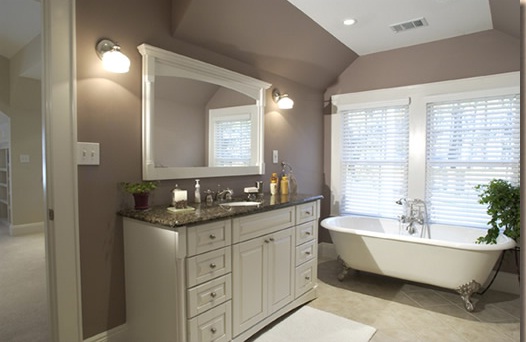A bathroom remodel is always a great upgrade for your home, however the contractor doing the majority of the work should not be doing the electrical. Your contractor may be able to do the drywall, tape, mud, texture, paint, plumbing, set the tub and or shower, but when it comes to doing the electrical work needed, chances are he wont know the proper way things need to be wired. These guys will often tell you that they can handle the electrical, what they don’t tell you is they will be learning, using your houses’ electrical system as their lab, while they are charging you electrician rates. Don’t chance it, tell your bathroom remodel contractor no thank you, I already have an electrical contractor, and call us!
Bathroom outlets need to be on a dedicated 20 amp circuit straight from the panel, and can only be on the same circuit with other bathroom outlets in that bathroom or any other bathrooms in the house. The only problem with combining multiple bathroom outlets on one circuit, is that you have more possible overloads with hair dryers and curling irons, and have to deal with the inconvenience of the circuit breaker tripping and needing to be reset. It’s always best to run a separate 20 amp circuit to each bathroom.
Exhaust fans are always a great idea to have in a bathroom due to the moisture that is present in the air anytime the shower is running. This will also prolong the life of the bathroom fixtures, paint and drywall. Exhaust fans come in a variety of styles and features and can even look like decorative light fixtures. Some fans come with lights and or even a night light that can all be wired on separate switches. Pay attention to the CFM (Cubic feet per minute) rating, this is how much air movement the fan can do and what size room the fan can accommodate. Last but not least, make sure you buy a fan that is quiet!
Jacuzzi tubs also need either one or two dedicated circuits from the main or sub-panel, depending on how sophisticated they are. These outlets at the tub also need to be GFCI protected, as do all outlets in bathrooms.
Lighting in your bathroom needs to meet California’s title 24 requirements on energy efficiency. Any incandescent lighting in a bathroom has to be on a occupancy sensor, any lighting over the shower or bathtub needs to be GFCI protected. Vanity light fixtures on one switch, and LED recess lights on another, are great lighting choices for your bathroom.


